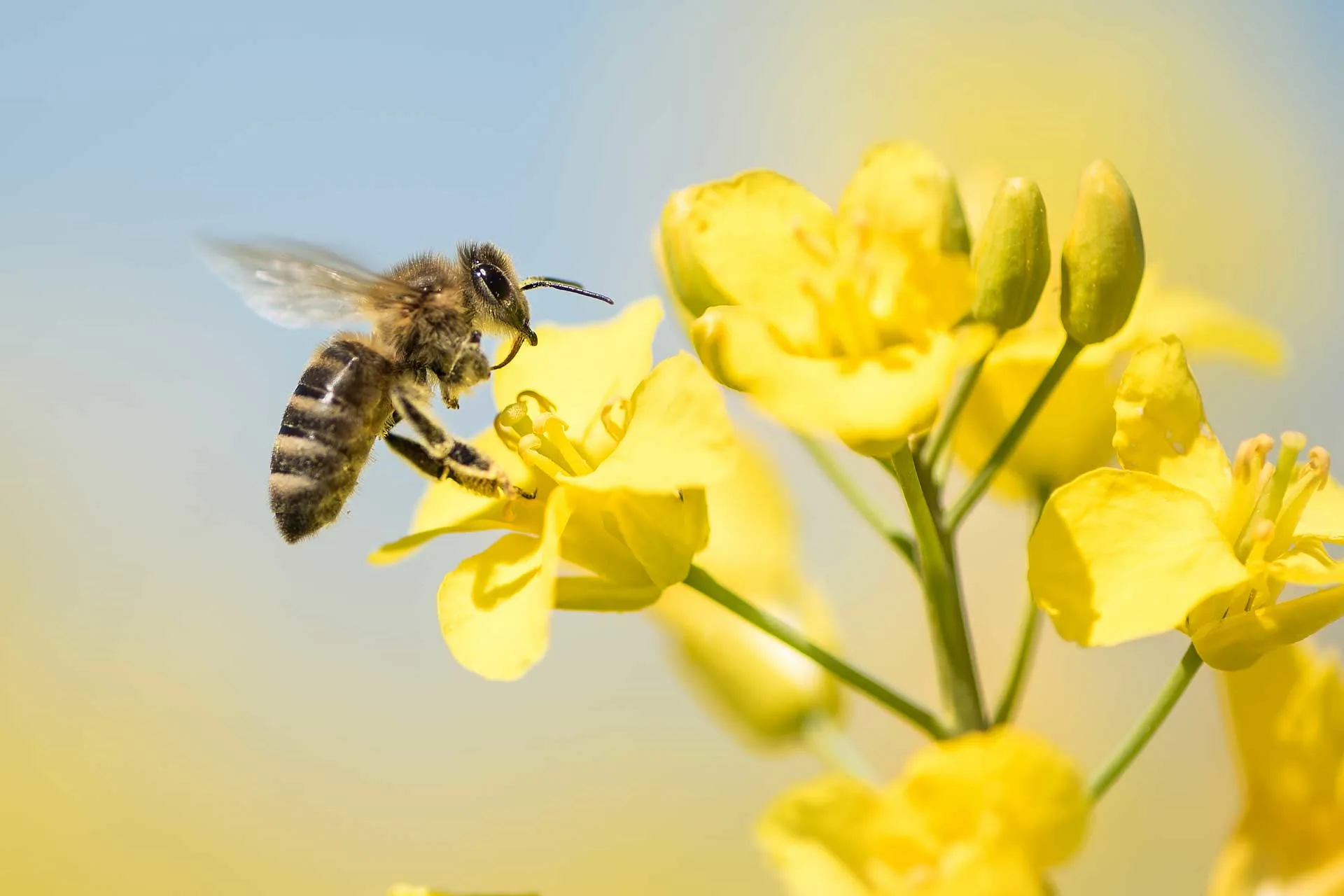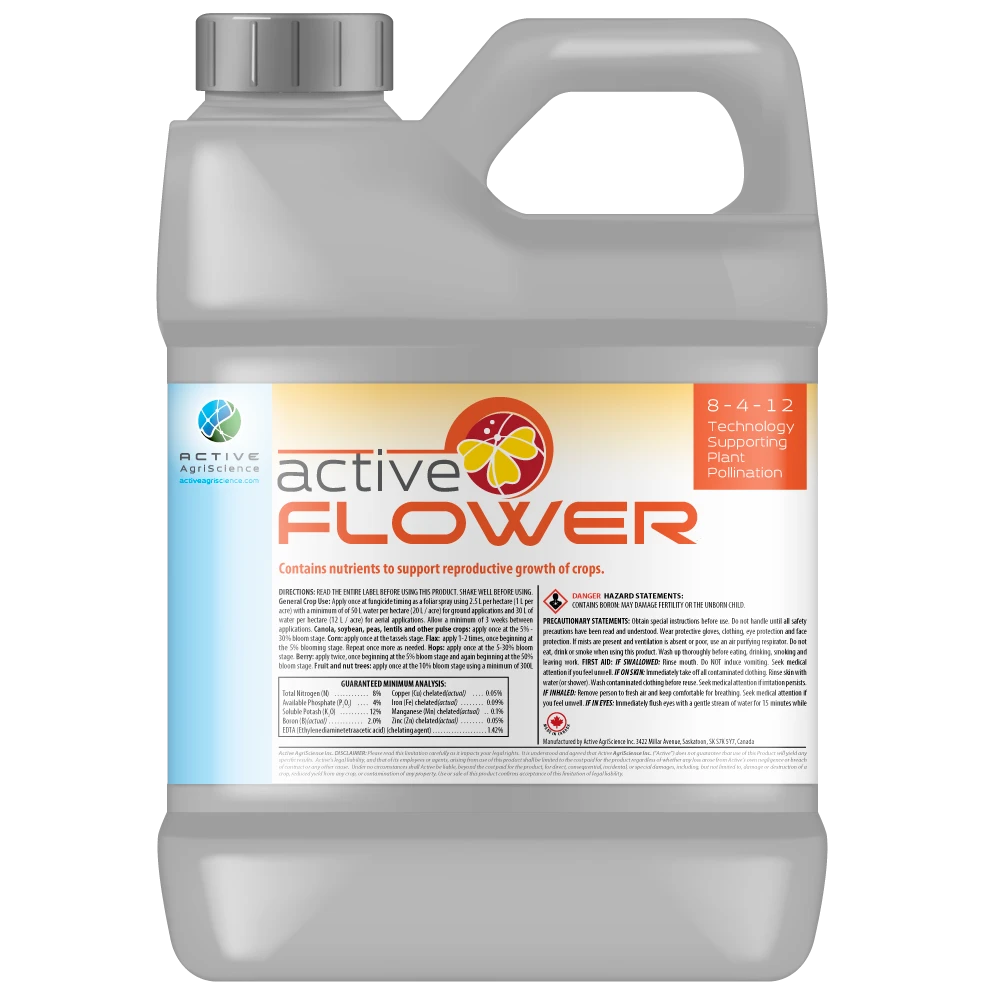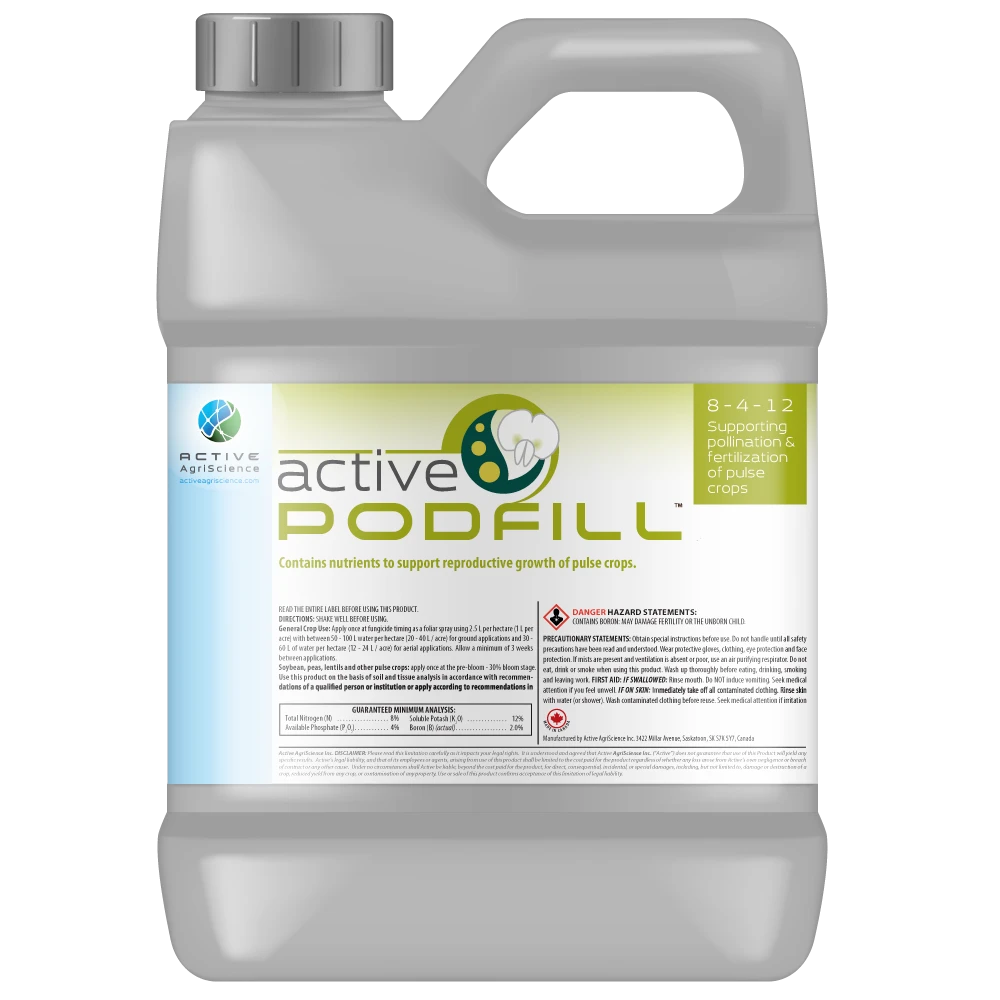
Did you know that over 80 percent of all flowering plants on earth require pollinators to reproduce? There is no denying that pollinators have a vital role in the support of life on our planet. As they harvest nectar from flower to flower, insect, animal and bird pollinators unknowingly collect pollen and transport it to other plants, leading to the fertilization and production of fruit and seeds.
Pollinating roughly 1,000 different species of plants grown for food, drink, spices, fibres and medicines, animal pollinators add between $235 and $577 billion to the global economy each year. With their significant value to not only our ecosystem but also our economy, it is in our own best interest to promote the health and safety of animal pollinators.

On this page
Types of Pollinators
Plant pollinators come in many forms, biotic: insects, birds, mammals, reptiles, amphibians, or abiotic: wind. Anything that facilitates the movement of pollen from one plant to another is considered to be a pollinator. There are around 200,000 different animal species that help with pollination.
Bees are the world’s VIP (very important pollinators). Bees have structures on their hind legs adapted for storing pollen and their fuzziness builds an electrostatic charge which helps pollen to stick to their bodies. Both adaptions, along with their high frequency of flower visitations, make bees the most effective pollinators in the world.
Although not as efficient as bees, other insect pollinators such as wasps, flies, beetles, moths and butterflies still play a critical part in plant pollination.
In North and South America, hummingbirds are the ideal bird for pollination. Hummingbirds need to drink two times their bodyweight in nectar every day requiring them to visit many flowers and transport pollen in the process.
The honey possum is an unusual pollinator found in Australia. A rodent about the size of a mouse, the honey possum is the only nectar eating marsupial in the world. Like the hummingbird, the honey possum has a high metabolism and needs to feed on nectar constantly. With its frequent flower visits, a honey possum can help pollinate many plant species.
Bats are particularly important pollinators in tropical and desert climates. Around 300 species of fruit require bats for pollination, including peaches, bananas, mangoes, cloves, agave and cacao. Without bats we would not have such delights like chocolate!







Pollination Methods
There are two methods plants use to reproduce: cross-pollination and self-pollination.
Cross-pollination occurs when a plant receives pollen from another plant of the same species. A pollinator is required to facilitate cross-pollination, whether it be an animal or wind. In plants that require cross-pollination, the anther (the part of the flower that produces pollen) and the stigma (the part of the flower that receives the pollen) mature at different times, making self-pollination impossible.
Self-pollination is when a flower receives pollen from itself or another flower of the same plant. Self-pollination is possible in plants where the anther matures at the same time as the stigma. To fertilize itself, pollen from the anther builds up and falls onto the stigma. Self-pollinating plants do not need pollinators to reproduce although some can benefit from cross-pollination.

Pollinators in Agriculture
Most legumes, greens, and oilseeds self-pollinate and do not require pollinators to reproduce. A few of these crops, however, can benefit from pollinators with an increased fertilization rate leading to more fruit, pods and seeds. For example, canola can self-pollinate, but studies show that animal pollinators improve canola yield potentially up to 15%. Other self-pollinating crops that have shown significant yield increases due to insect pollinators include sunflowers and faba beans.
Grain crops like wheat, corn, rice, barley, oats and rye generally cross-pollinate but with the help of wind rather than insects. These crops receive little to no benefit from animal pollination. Wind pollinated plants produce light pollen that is easily carried by the wind. They also have a sticky stigma that reaches out beyond the flower which makes it easy to collect pollen blown around by the wind.
Orchard crops like nuts, fruit, and berries generally have heavier pollen which is harder to move and a stigma that is deep within the flower making it harder to reach, therefore requiring animal pollinators to reproduce. These crops produce sweet fragrances and large, bright flowers for attracting insects and other nectar-hungry creatures. Some fruit, berry, and nut crops can self-pollinate but usually benefit from cross-pollination.




Improve Crop Pollination and Fertilization
Improving crop conditions during the reproductive stage involves not only encouraging pollinators on your farm but also making sure your crop has the nutrients it needs to produce plenty of flowers and pollen to maximize fertilization.
Wild Pollinators
Depending on the type of crop you grow, encouraging a thriving ecosystem of insect pollinators can help improve your yield. Planting a diverse species of flowers and shrubs in non-cropped areas that bloom throughout the season will attract wild pollinators to your farm. Having a variety of insect pollinators visiting your field is important because they all have different ways of moving through your crop, improving flower visitation.

Beehives
Having beehives near your acreage adds a reliable pollination service for your crop. Canola, for example, and honeybees have a fantastic working relationship. Canola flowers are a great source of pollen and nectar, and their yellow petals are the most attractive color for bees. Honey producers will also benefit from a farmer’s crop by producing more and better-quality honey.

Insecticide Application
Some insecticides have shown to be harmful to bees and other pollinators. Applying your insecticide when pollinators are less active, outside of your crop’s blooming stage or when the sun goes down, can greatly reduce the harm to pollinators caused by insecticides. Choosing an insecticide that is less toxic for pollinators will also help reduce harm. The Western Forum on Pest Management has a table of insecticides and their hazard ratings to bees.
Boost Crop Health During the Reproductive Stage
Making sure your crop is receiving all the nutrients it needs during the reproductive stage is key to attracting pollinators and increasing yield potential. Active FLOWER contains nutrients, polyamines and organic acids that help support and enhance plant fertility. Nutritional components in Active FLOWER help improve pollen hydration, germination, pollen tube growth and viability, and encourages bee foraging activity which aids fertilization. Plants have the potential to produce more fruit sets and an increased number of larger and uniform pods and seeds. Six years of research data have shown evidence that Active FLOWER could boost your canola crop yield by 9%.

Depending on the crop type, pollinators play a critical role during its reproductive stage and should not be overlooked. Encouraging pollinator populations to thrive in your area can aid pollination rates which can help increase crop yield quality and quantity. Products like Active FLOWER, with a nutrient mix designed specifically for a plant’s reproductive stage, support the pollination and fertilization process.
-

Active FLOWER™
The nutrient content in Active FLOWER™ helps enhance pollen development, anther dehiscence, pollen hydration, fertilization, and production of fruit, pods and seeds.
-

Active PodFILL™
The nutrient content in Active PodFILL™ enhances pollen development and fertilization of peas, lentils, soybeans.
Links
Pollinators and Agriculture:
http://www.fao.org/3/i9527en/i9527en.pdf
https://www.gov.mb.ca/agriculture/crops/insects/pollinators.html
Canola and Bees:
https://www.canolacouncil.org/about-canola/sustainability/bees/
https://www.canolacouncil.org/canola-watch/2013/06/19/bees-and-canola-are-good-for-each-other/
Pollination in Pulses:
https://saskpulse.com/files/general/160609_Bees_and_Pulse_crops.pdf